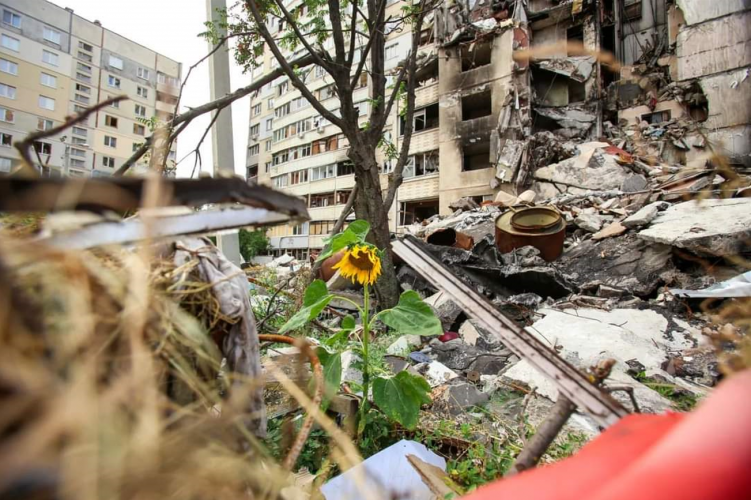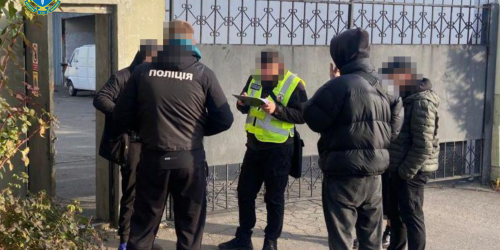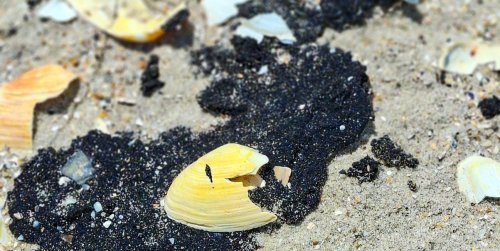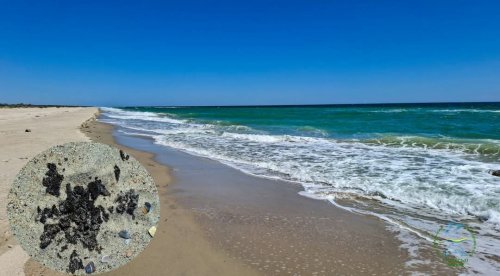The head of the Ministry of Environment, Ruslan Strilets, said that despite the war, one of the priorities of the Ministry of Environment is the adaptation of national environmental legislation to EU requirements.
Currently, the Verkhovna Rada is considering 19 European integration bills, 4 of which must be adopted as a priority for the implementation of the Association Agreement with the EU, reports Ministry of Environment.
These are the draft laws:
- No. 4461 on the territories of the Emerald Network;
- No. 7327 on the state environmental monitoring system;
- No. 4187 on the support for the development of domestic subsoil use industries;
- No. 6004-2 on ensuring the citizens' constitutional rights to an environment that is safe for life and health.
The estimated amount of damage caused by Russian troops to the environment of Ukraine is more than 962 billion hryvnias. The team of the Ministry of Environment will continue to calculate the damage to nature from Russian aggression, because this is important for the formation of lawsuits and receiving compensation.
Threats to nuclear and radiation safety
As of August 31, 2022, the Zaporizhzhia NPP operates with the risk of violating radiation and fire safety standards.
On August 25, the ZNPP lost connection with power lines at least twice during the day. There are currently no comments on the operation of equipment and security systems.
In addition, on August 28, the Russian military continued to fire at Energodar and the ZNPP site. As a result of periodic shelling, the infrastructure of the station was damaged, there are risks of hydrogen leakage and sputtering of radioactive substances, and there is a high fire hazard.
On September 1, as a result of another mortar shelling by the Russian occupying forces at the site of the Zaporizhzhya NPP, the emergency protection was activated and the operating 5th power unit was shut down. On the same day, the IAEA mission arrived at the ZNPP.
The occupiers are making every effort to prevent the mission from getting to know the real state of affairs at the Zaporizhia NPP. In particular, inspectors of the IAEA mission moved around the station and communicated with ZNPP employees in the presence of the Russian military and Rosatom employees, while Ukrainian and foreign journalists were not allowed to enter the station.
"We demonstrated that the international community is present at the station, can stay there, and we will continue this work. Our work at the station has only just begun," IAEA Director General Raphael Grossi commented on the beginning of the mission at the Zaporizhia Nuclear Power Plant.
Ukraine expects that the results of the mission will be the de-occupation of the ZNPP, its return to the full control of Ukraine and further demilitarization of the territory around the plant.
According to NASA FIRMS satellite data, August 24 in the border areas Exclusion zones of the Chernobyl NPP 4 ignition centers were recorded. No open burning is observed, only smoldering and smoke in the Denisovets, Parishiv and Kotovsk forests.
Extinguishing fires is complicated by the mining of many areas of the zone and the proximity to the borders of Belarus. An increase in the level of radiation in the Exclusion Zone was not detected.
Attacks on infrastructure and industrial facilities
August 25:
- shelled the workshop of the non-ferrous metal processing plant in Bakhmut, the Donetsk region. As a result of the shelling, a fire broke out, equipment and materials were burning in an area of 400 square meters;
- launched rocket attacks on the Synelnikyvskyi district of the Dnipropetrovsk region, damaging the enterprise building and agricultural warehouses.
August 26:
- attacked the Dnipropetrovsk region: in the Mezhivska community, they targeted the building of an enterprise causing a fire there. Agricultural company warehouses were destroyed in the Velykomykhailivska community;
- launched 16 missile strikes on Zaporizhzhia. As a result of the attack, an enterprise and adjacent multi-storey residential buildings were damaged;
- launched a missile attack on Chuguiv in the Kharkiv region, damaging the infrastructure facility.
August 27:
- shelled the Dergachi community of the Kharkiv region, a building of one of the industrial enterprises was destroyed;
- shelled the city of Kharkiv and the civilian population of Bogodukhiv, Chuguyiv, Kharkiv, and Izyum districts. Industrial facilities were damaged and there were fires, in particular, at a warehouse with sunflower seeds;
- shelled an energy enterprise in the Zelenodolska community of the Dnipropetrovsk region.
August 28:
- launched a missile attack on a military infrastructure facility in Sarny, the Rivne region. About 30 civilian objects, in particular, hospital premises, were damaged. About a hectare of forest area caught fire, the fire was extinguished by the employees of the State Emergency Service;
- attacked Mykolaiv with the "Smerch" MRLS, a fire broke out on the territory of the elevator;
- shelled the machine-building plant in Bakhmut, it took almost 10 hours for firefighters to extinguish the fire on an area of 700 square meters;
August 29:
- shelled and damaged 2 workshops of the Avdiivka coke chemical plant in the Donetsk region;
- launched 16 S-300 anti-aircraft missiles at Mykolaiv, damaging transport infrastructure facilities;
- launched 2 missile strikes at Kharkiv’s downtown. Administrative buildings were partially destroyed.
August 30:
- The Nikopol, Kryvyi Rig, and Dnipro districts of the Dnipropetrovsk region were shelled by Russian forces: civil infrastructure, power grids, and gas pipelines were damaged. In Kryvyi Rig one of the industrial enterprises was damaged;
- the Russians shelled Kharkiv’s downtown with artillery, as well as Dergachi, Bezruky, Slatine, Prudyanka, Dementiivka, Nowe, Pitomnyk, and Ruska Lozova. Civil infrastructure facilities were destroyed;
- In Zaporizhzhia, a gas station was damaged due to Russian missile strikes.
August 31:
- shelled a dairy farm near the village of Velyka Bilozerka in the Zaporizhzhia region, destroying 11 of the 14 buildings of the agricultural enterprise and killing about a thousand cows;
- shelled Mykolaiv. As a result, grain silos at an infrastructure facility in the Korabelny district caught fire spreading over an area of about 200 square meters.
Large-scale fires at infrastructure and industrial facilities lead to air poisoning with particularly dangerous substances. Pollutants can be carried by winds over long distances.
The destruction of buildings and settlements leads to environmental pollution with construction debris and asbestos. The consequences of such pollution for the environment will be felt for years.
Pollution directly caused by hostilities
According to Ukraine’s State Emergency Service, from February 24 to August 31, 190,029 explosive devices, including 2,106 aircraft bombs, were neutralized in Ukraine. An area of 69,428 hectares was surveyed for explosives.
Pity the nature reserves and protected ecosystems
The number of forest fires in Ukraine compared to the same period in 2021 increased by 2.3 times, and the area increased by 77 times. In 70% of cases, forest fires are caused by active hostilities or shelling by cruise missiles, mine explosions, etc.
On August 25, Russian shelling destroyed coniferous litter, forest plantations, and a farm building on the territory of the Halytsyniv forest tract in the Mykolaiv region, which caused 111 million hryvnias in damage.
Also, on August 25, the Shalygin territorial community in the Sumy region was shelled, probably from multiple rocket launchers with phosphorous projectiles, 20 explosions were recorded. After surveying the area, a forest fire was discovered in the area of the nature reserve and the remains of projectiles.
"A significant area of this year's forest fires in the Kyiv region and Chernihiv region (more than 1.2 thousand hectares) were burnt by large fires. The main reasons are the mining of forest areas," the article says.
Foresters cannot risk people and go deep into unmined territory where forest fires occur. They are forced to choose the tactics of localizing fires along the perimeter of the fire, preventing the fire from spreading to the areas where the State Emergency Service and the Armed Forces of Ukraine have already cleared mines. The neutralization of explosive objects continues in the Kyiv region. To prevent forest fires, forestries set up almost 10.6 km of firebreaks and barriers and 28,400 km of mineralized strips.
Experts of the Ukrainian Society for the Protection of Birds and BirdLife Europe & Central Asia conducted a study that showed that as a result of military operations, birds in Ukraine are threatened with destruction, as well as the loss and pollution of habitats and nesting places.
Damage to water resources
Russian troops are carrying out targeted strikes on the infrastructure for the intake, purification and supply of water, as well as sewage treatment facilities. Water supply and drainage facilities in Luhansk, Donetsk, Zaporizhzhia, Kharkiv and Mykolaiv regions were significantly damaged due to Russian aggression.
Since April 2022, half a million people in Mykolaiv live without a stable water supply.
Black and Azov seas
On August 28, a huge oil slick appeared in the temporarily occupied Berdyansk and washed up on the local beaches. According to the Berdyansk mass media, the environmental disaster occurred on the Lyska beach near the water area of the Berdyansk port, where the Russian occupiers are carrying out explosive works.
As a result of Russian missile strikes, 100 hectares of the protected territory of the Tuzlivski lymani NPP burned down. Park employees continue to find bodies of dead dolphins on the sea coast. In 2022, 35 dolphin bodies were found on 5 km of the coast of the national park, to which scientists have access. In 2021, only 3 dead dolphins were found on the entire coast of the park (44 km) for the entire year.
Earlier, EcoPolitic wrote, that in the Sea of Azov in the area from the village of Primorsky Posad to the city of Berdyansk, Zaporizhzhia region, specialists of the Operational Headquarters for Fixing Ecocrimes discovered oil spill on an area of 1,434 sq. km.
As EcoPolitic previously reported, in Ukraine in half a year during the war, the damage to the environment amounted to more than 962 billion hryvnias, without taking into account the damage to forests, the Black and Azov seas, subsoil, natural reserve fund, etc.





